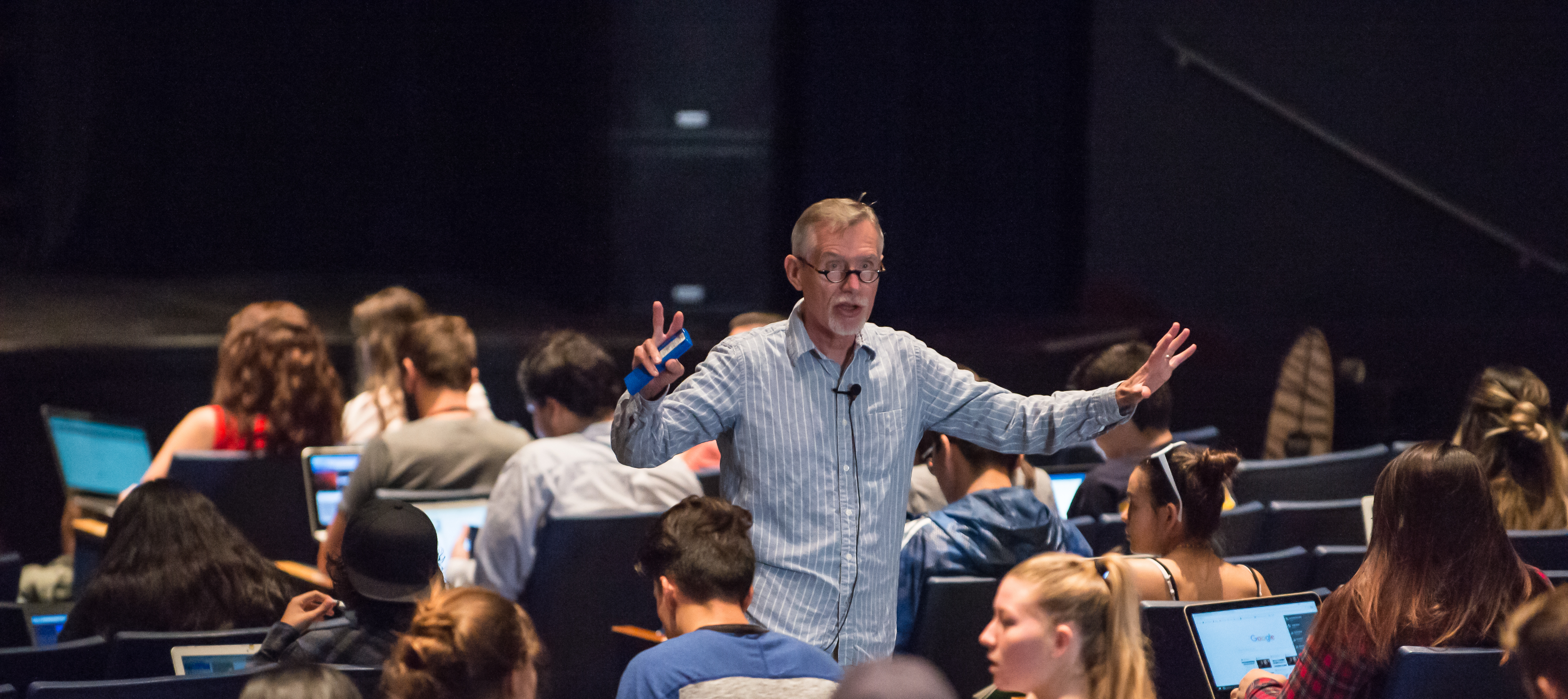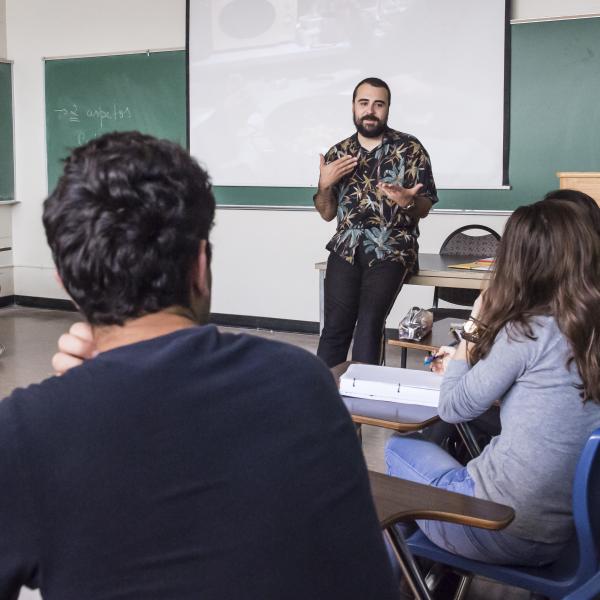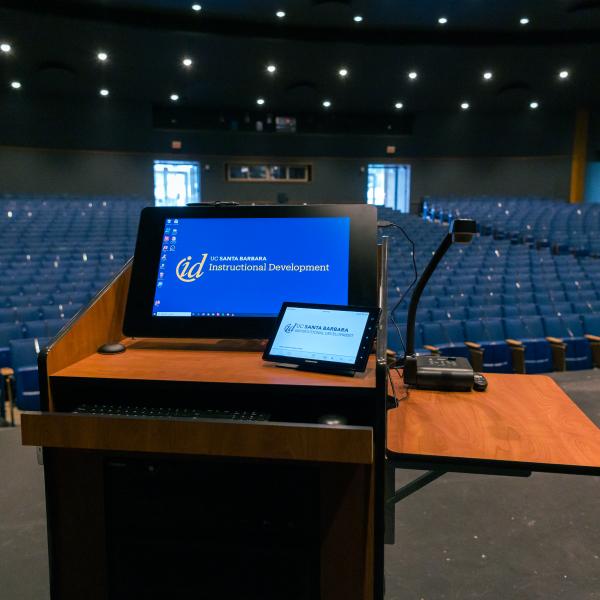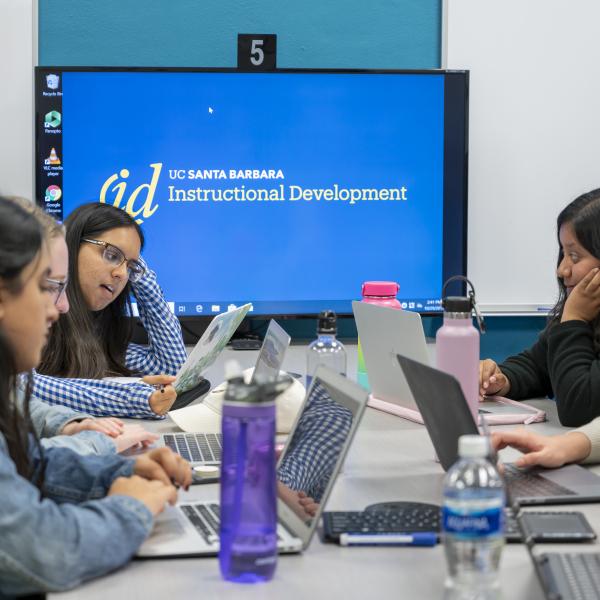We believe that becoming an excellent instructor in higher education is a long-term endeavor of intentional experimentation and iteration. As you consult with us about your courses, attend teaching workshops, or work with us to design, develop, evaluate and iterate your courses, you will achieve your personal goals for teaching excellence. Topics that faculty often discuss with us include:
- Planning and streamlining courses
- Assessing student learning
- Strategies for engaging students
- Flipped, online, and hybrid courses
- Educational technologies
- Working with Teaching Assistants
- Teaching Grants
- Course Evaluations
We also partner closely with the UCSB support staff for educational technologies (Collaborate) and with the Center for Innovative Teaching and Research on Learning (CITRAL) to bring you a well-rounded set of professional development opportunities year-round.
Getting Started Teaching as a New UCSB Instructor
Explore the essentials of class logistics, preparing materials, and supporting students in the menus and handbooks below to get started teaching at UCSB. For a comprehensive guide for new faculty members at UCSB, please also check the UCSB faculty handbook.
Departmental Responsibilities
Your department will help you with:
- All hiring paperwork
- Getting your UCSB email address and NetID so you have access to all of the systems and technology, like Canvas.
- Ordering any required textbooks for your course. Consider putting several copies in the UCSB Library course reserves for students’ to check out. Familiarize yourself with library resources for instructors.
- A computer lab reservation for class or sections, when needed.
- Other materials and supplies (like whiteboard markers).
- Support for photocopying (e.g. of handouts, exams) - ask how far in advance you should make requests.
Discuss with your department whether your course has TA support and what the department’s practice is for matching graduate students to particular courses. Also familiarize yourself with the TA’s rights and responsibilities.
Classrooms
Find out which classroom(s) you are teaching in (from your department or from the UCSB Schedule of classes). Look at where it is and what kind of resources and technologies are in that room using either:
- The Instructional Development Classroom Services website (for most classes). These classrooms require a lectern key, login, and password to operate the projector and podium. You must come to Classroom Services in 1160 Kerr Hall (open M-F 8am to noon) to get set up.
- The Collaborate Classrooms and labs website has information about using their classroom technology.
- Note: If your classroom is not listed on either of these websites, you are likely teaching in a departmentally-controlled classroom and will need to contact your department’s business officer/administrative assistant.
Go to your classroom before the quarter starts to test out the technology and get a feel for the layout of the desks, whiteboard, markers, lighting, etc.
- If the classroom has a whiteboard, be sure to bring your own markers (check with your department). If the classroom has a chalkboard, chalk will be provided.
- Review “Key Information for General Assignment Classrooms” to find out what adapters or keys you might need.
If you have questions or need hands-on training, contact Instructional Development at id-help@ucsb.edu to make an appointment.
If questions arise while you are teaching, call Instructional Development’s helpline (posted via a QR code and telephone number on the lectern).
Learn about the course you are teaching
- Who enrolls in it, how does it fit in with the curriculum, which requirements does it satisfy - including GE requirements. Talk with your department and/or consult the UCSB course catalog for this information.
- Ask for teaching materials used by the prior instructor(s) of the course.
- Be aware that students will evaluate your course using the online Evaluation System for Courses and Instruction.
- Enter final course grades in Egrades by the date listed in the egrades course block.
- Familiarize yourself with the UCSB Campus Calendar for each quarter’s start and end dates, and any campus holidays.
Get advice from Instructional Consultants
Make an appointment with someone from the Office of Instructional Consultation for advice on your syllabus, assessment strategies, and technology tools that would suit your course and teaching strategies. Visit the Teaching Handbooks for:
- syllabus templates and resources,
- ideas about course organization,
- assessing learning,
- and more teaching resources.
Create a course Canvas site
Create an organized Canvas site that includes as much of the material for the course as possible.
New to Canvas? Contact the Canvas helpdesk for training and support documentation.
Explore the educational technologies supported by UCSB, and which integrate with the Canvas learning management system.
Course "Crashers"
If your course fills up quickly, you will have students who want to be added to the course. We call these students "crashers". Here are tips to manage enrollment:
- Keep in mind that drop rates (meaning a student can leave your class with no penalty for the first few weeks of a quarter) are typically around 10%.
- Check if your department has policy or guidelines on issuing add codes. Remember that add codes should be issued using neutral, meritocratic criteria, such as class standing, GPA, etc.
- Set up a Waitlist to automate the distribution of add codes.
- Login to E-grades for “add codes” that you can distribute.
- Give crashing students access to your Canvas site.
Students with disabilities
Students with disabilities may request instructional accommodations through the Disabled Students Program (DSP).
- Check with your department about who is responsible for coordinating exam proctoring with DSP.
- DSP will only arrange proctors when required by the accommodation.
- Accommodations for extra time on assessments can be managed in Canvas, GauchoSpace, and GradeScope.




